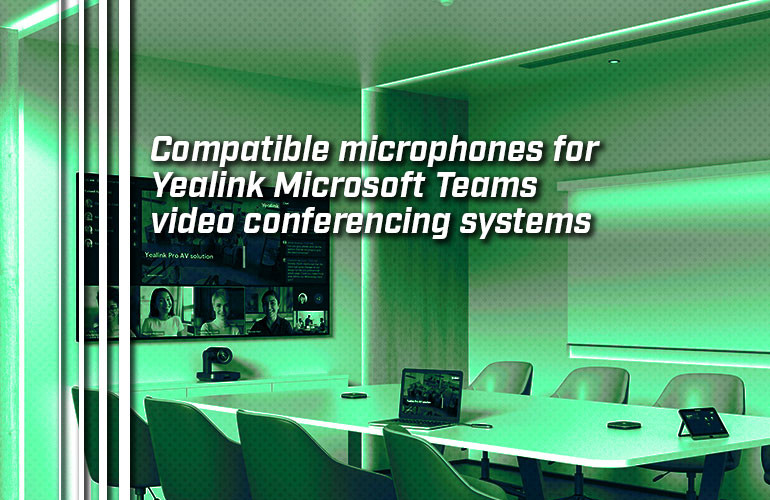When it comes to video conferencing systems, the focus is usually on the camera (no pun intended).
But how people sound is as important as how they look.
If people sound muffled, if there’s lots of background noise, if people’s voices aren’t distinguished well — if any of these common issues occurs, it can harm a video call as much as highly pixelated or out-of-focus or blown-out video.
Thankfully, Yealink provides many microphone options for Yealink video conferencing systems.
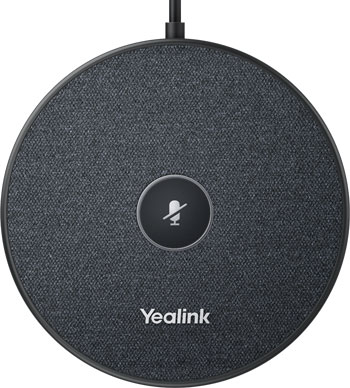
In this blog, we cover what Yealink microphones are compatible with the latest Yealink MVC Series Microsoft Teams Rooms Systems. You will see these referred to by Yealink as the 3rd-generation MVC systems. With the 3rd-gen MVC Series, Yealink is no longer bundling them with audio devices to let you use existing microphones or choose the best solution for your specific situation, so knowing microphone compatibility with Yealink MVC Systems is important.
Here’s a list of the current 3rd-gen Yealink MVC Series systems:
- Yealink MVC340-C4-000 Microsoft Teams Rooms System for Huddle to Small Rooms
- Yealink MVC400-C4-000 Microsoft Teams Rooms System for Small Rooms
- Yealink MVC640-C4-000 Microsoft Teams Rooms System for Medium Rooms
- Yealink MVC S60-C5-000 Microsoft Teams Rooms System for Medium Rooms
- Yealink MVC840-C5-000 Microsoft Teams Rooms System for Medium to Large Rooms
- Yealink MVC860-C5-000 Microsoft Teams Rooms System for Medium to Large Rooms
- Yealink MVC940-C5-008 Microsoft Teams Rooms System for Extra-Large Rooms
- Yealink MVC S90-C5-007 Microsoft Teams Rooms System for Extra-Large Rooms
We also link to the necessary pages on the Yealink Support site for detailed information about compatibility, installation, and more.
By showing you what microphones work with Microsoft Teams conference room equipment, we also hope to introduce you to how to discover what microphones are compatible with other Yealink video conferencing equipment, including Yealink ZVC Series Zoom Rooms Systems.
Because of the complexity of using many different types of microphones with many different systems, this blog doesn’t cover every possible combination. Device compatibility can change over time. The information in this blog is current as of publication (September 2023).
We highly recommend you double check current compatibility before purchase. Please visit Teams Room Accessories Compatibility Lists (external link) on the Yealink Support site for up-to-date information.
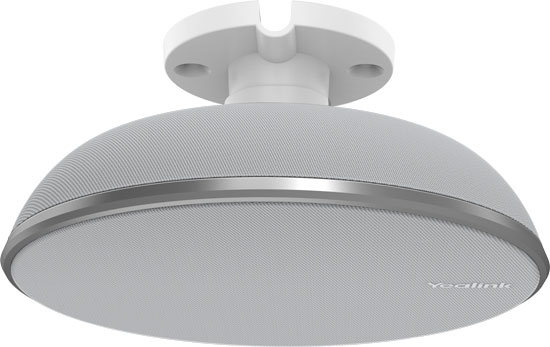
Microphones to use with Yealink video conferencing systems
Yealink offers many different microphones that can be used with various MVC systems, including:
- Yealink CPW65 — two wireless DECT microphones each with a 360° 10-foot voice pickup diameter
- Yealink MSpeech — plug-and-play smart USB speakerphone with a 360° 10-foot voice pickup diameter and powerful 4W speaker
- Yealink VCM34 and Yealink VCM35 — 3-microphone arrays plus Noise Proof technology for 360° 20-foot voice pickup; use Ethernet cables for reliable wired connectivity
- Yealink VCM36-W — Wi-Fi microphone with 360° 20-foot voice pickup diameter for encrypted wireless communications
- Yealink VCM38 — installed in the ceiling of a dedicated meeting room for a clutter-free environment
You can also use internal microphones if the video conferencing devices have them or third-party external microphones via line-in jacks. One other option is to use Yealink AVHub with compatible microphones from manufacturers like Shure and Biamp.
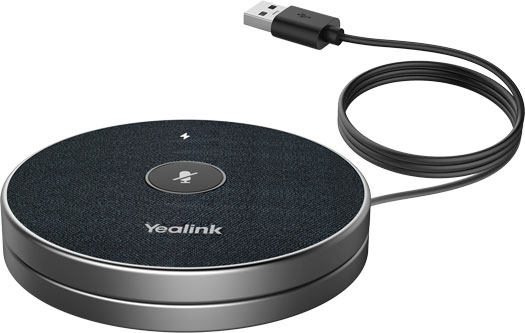
What do you connect the microphones to?
There are three typical ways to connect microphones to an MVC system. Note that not every microphone will be able to connect in all three of these ways. Again, check before purchase!
- Connect the microphone to a UVC84 or UVC86 Camera
- Connect the microphone to an AVHub
- Connect the microphone to the POE switch that connects your conference room equipment to the network
If the microphone is wired, you will connect it to one of these via its cable. For example, VCM34 uses a standard Ethernet cable, which you can plug into the camera, AVHub, or network switch.
If the microphone is wireless, you will connect it according to its requirements. For example, CPW65 uses a WDD60 dongle that you plug into the camera or other device to connect to the system.
For complete installation instructions, check out the pages found on the Yealink Support site under Meeting Room Endpoints Accessories > Microphone (external link).
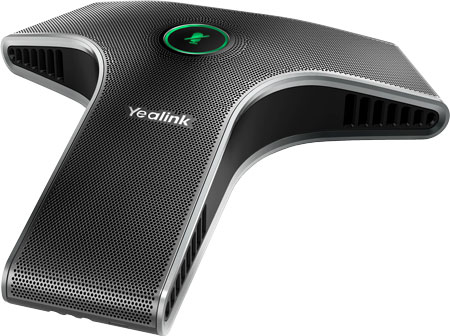
What is Yealink AVHub?
Just a quick note: a video conferencing camera and a network switch are common equipment, but what is Yealink AVHub?
AVHub is a purpose-built device that streamlines cabling and offloads processing of audio and video feeds. We introduce the A/V processor and cover how you use it with Zoom Rooms in this blog: How to setup a multi-camera Zoom Rooms video conferencing system.
It also lets you use two video conferencing system as one larger system (or vice versa), as we covered recently: How to combine two video conferencing systems into one large system.
Back to the microphones…
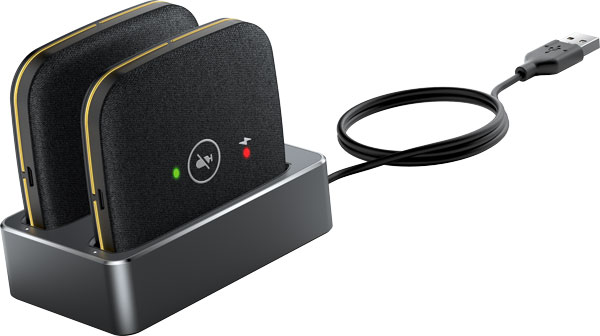
You cannot mix and match microphones
This is important! As of the publication of this blog (September 2023), you cannot mix and match microphones. This means that you can only use microphones of one type at one time. You can, however, use more than one microphone of the same type, if the system supports it.
If you try to use different types of microphones, the system will automatically prioritize them, then use the input from the highest priority microphone for audio. Here’s a list of the current priority (1 being highest priority):
- VCM38
- VCM35
- VCM34
- VCM36-W
- CPW90-BT
- CPW65
- Line-in
- Built-in microphone
- USB to Line-in
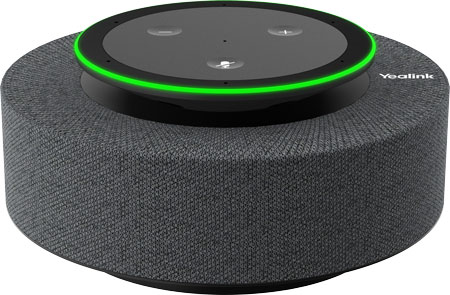
How many microphones can you use?
Unfortunately, this is the most complicated question of all.
The systems support different models of microphones; they also support different quantities of these microphones.
For example, here’s the current microphone compatibility information for the 3rd-gen Yealink MVC840 Microsoft Teams Rooms System:
- CPW65 — up to 2 (i.e., up to one pair)
- CPW90 — up to 4 (i.e., up to two pairs)
- CPW90-BT — not supported
- MSpeech — up to 1
- VCM34 — up to 6
- VCM35 — up to 8
- VCM36-W — up to 2
- VCM38 — up to 8
How do you know how many microphones a given system supports? You’ll have to go to the Yealink Support site. We’ve already linked to this page, but we’ll do it again: Teams Room Accessories Compatibility Lists (external link).
We hope this information helps you!

